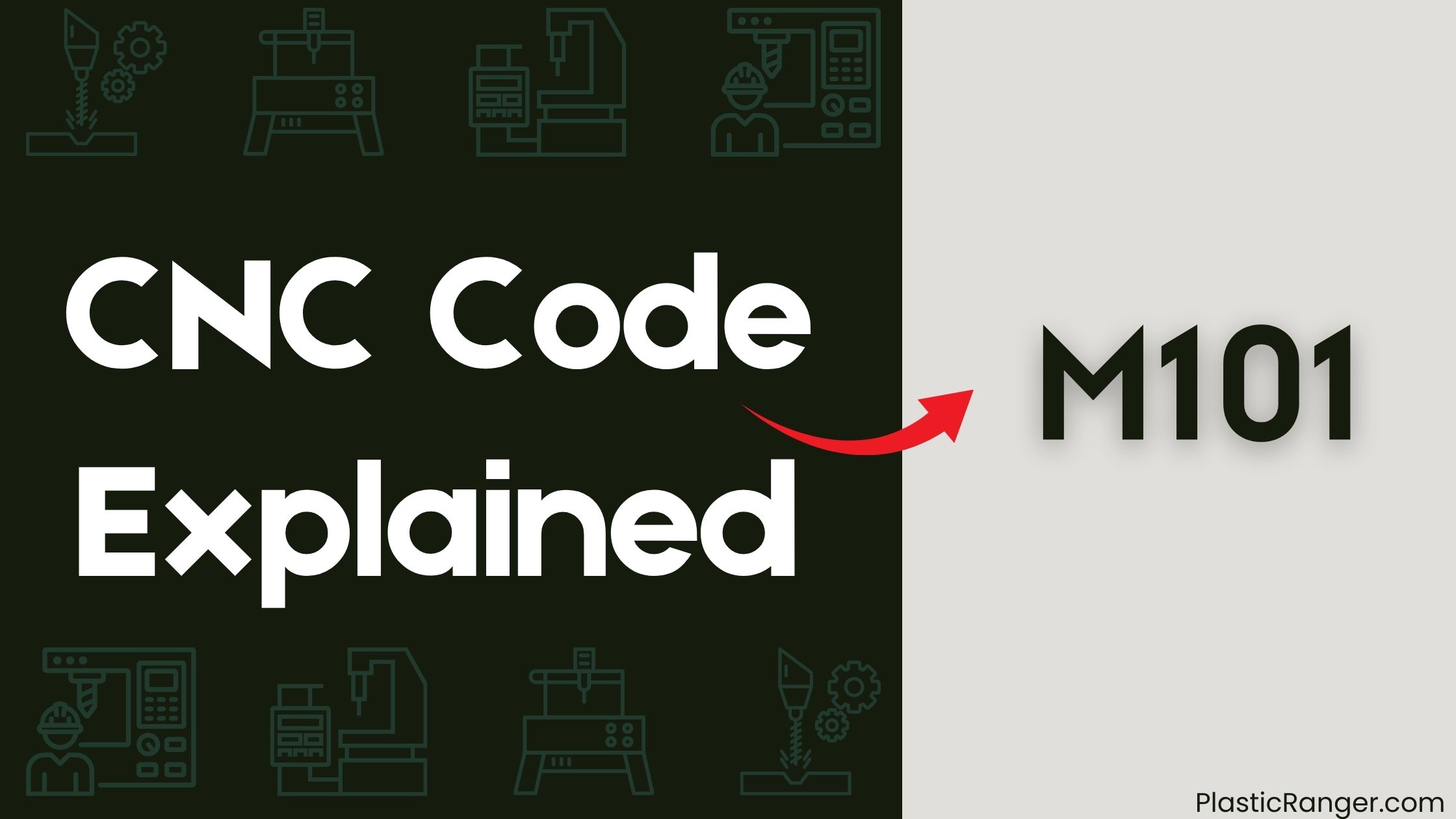Welcome to our simple guide on the M101 CNC code. Whether you are new to CNC programming or an experienced machinist, understanding the M101 code is essential.
This guide will explain everything you need to know about this unit mode command—what it is, when to use it, and why it matters.
(Step-by-step.)

Key Takeaways
- There is no M101 CNC code in standard CNC programming, and it may be a custom or proprietary code.
- M-codes control various aspects of CNC machine operation, but M101 is not a recognized standard code.
- Standard M-codes include M6 for tool change, M3 and M4 for spindle start, and M5 for spindle stop, but M101 is not among them.
- CNC Syntax Editor features do not include support for M101, as it is not a standard code.
- To find the meaning of M101, check the specific CNC machine’s documentation or consult with the manufacturer or programmer.
M-Code Functions and Examples
You’ll encounter several M-codes that control various aspects of your CNC machine’s operation.
These codes dictate specific actions, such as stopping the spindle or changing tools. For instance, M6 stops the spindle and initiates a tool change, prompting you to swap tools if the HAL component hal_manualtoolchange is loaded.
M3 and M4 start the spindle in clockwise or counterclockwise motion, respectively, at the set S speed, while M5 stops the spindle altogether.
Additionally, M-codes can control coolant functions, such as mist coolant (M7), flood coolant (M8), or turning both off (M9).
These codes allow you to set and control various aspects of your CNC machine’s motion, mode, and tool operation.
CNC Syntax Editor Features
Your CNC programming experience gets a significant boost with the CNC Syntax Editor, a powerful tool designed to streamline your coding process.
This editor supports syntax highlighting for all G and M codes, making it easier to write and debug your program. You can set tool length offset, compensation, and control mode with ease. Additionally, you can specify units per minute and cycle start parameters.
When you’re ready, simply set to absolute and let the motion controller take over. Available in trial or free version for download, the CNC Syntax Editor also offers real-time data monitoring and logging capabilities, allowing you to fine-tune your program.
Program Stop and Program End
As you refine your CNC programming skills, it’s essential to understand the commands that control the execution of your code.
M00 and M01 are used to stop a running program temporarily. M00 stops the program regardless of the optional stop switch setting, while M01 stops the program only if the optional stop switch is on.
You can restart the program at the following line of the G-code program by selecting Cycle Start.
To end a program, use M02 or M30. These commands set axis offsets to zero, origin offsets to default, and selected plane to XY.
After executing M02 or M30, no more lines of code are executed, and selecting Cycle Start starts the program back at the beginning of the file.
Spindle and Tool Control Commands
Within the domain of CNC programming, spindle and tool control commands play a crucial role in executing specific machining operations. These commands enable you to control the spindle’s rotation, set the tool number, and configure various machining parameters.
| Command | Function |
|---|---|
| M03 | Spindle is stopped and set to the default rotation direction (clockwise) |
| M04 | Spindle is stopped and set to the default rotation direction (counterclockwise) |
| T01 | Set tool number to 1, motion mode is set to cutter compensation, length compensation, and coordinate system, and plane is set to default |
| G43 | Cutter compensation is set to the default value |
Coolant Control and Digital Outputs
When machining complex parts, controlling coolant and digital outputs is essential to achieving ideal results.
You’ll need to manage coolant flows and digital signals to achieve precision and efficiency. M7 and M8 codes come into play here, as they turn mist and flood coolant on, respectively. Conversely, M9 turns both off, stopping all coolant functions.
For digital outputs, use M62 to turn them on, synchronizing them with motion for precise control. Additionally, M67 sets analog outputs synchronized with motion, allowing for fine-tuned control over analog signals during CNC operations.
CNC Codes Similar to M101
Code | Mode |
|---|---|
| M102 | Restart Program |
| M103 | Turn extruder off |
| M104 | Set hotend temperature |
| M105 | Report Temperatures |
| M106 | Workpiece measurement WID start |
| M107 | Turn fan off |
| M108 | Break and Continue |
| M109 | Wait for hotend temperature |
| M110 | Tailstock Chuck Clamp |
| M111 | Tailstock chuck unclamp |
| M112 | Full Shutdown |
| M113 | External tool compensation EXT end |
| M114 | Z-axis offset measurement ZOF start |
| M115 | Move a touch probe in custom probing cycles |
| M116 | Work Ejector Operation Command |
| M117 | Set LCD Message |
| M118 | Serial print |
| M119 | Sub spindle orient |
| M120 | Work shower ON |
| M121 | Steady rest close end |
| M122 | Record position(s) in data file |
| M123 | Monitor spindle load and detect cutter issues |
| M124 | Record machine position(s) in data file |
| M125 | Store current position and move to parking position |
Quick Navigation
